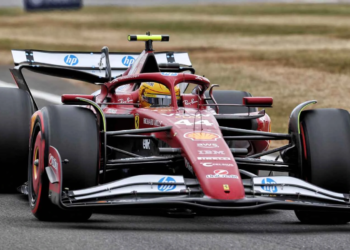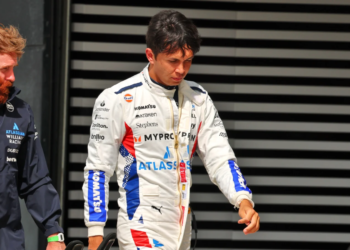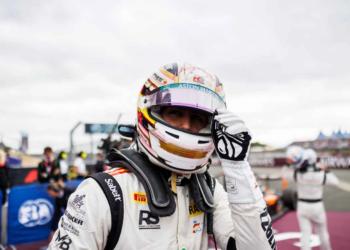What is Formula 1? And what should it be?
Sometimes the most straightforward questions can be the most challenging to answer, for there is no right or wrong answer, but merely a maze of potential options.
It is, fundamentally, a sport in which 20 drivers try and complete the assigned distance in the most effective manner, maximising their potential to obtain the highest possible result. And, ostensibly, do so as clinically and consistently as possible, avoiding mistakes, while preserving their equipment – tyres, engines, brakes, gearboxes, etc.
But what should it be? And therein lies the difficult question to answer – and it is a crucial discussion point at a time when Formula 1 chiefs, some newly installed under the sport’s 18-month-old ownership, are seeking to adopt vision both medium- and long-term. It also comes at a time when the line between sport and entertainment is becoming increasingly blurred, where quality versus quantity is an argument being won by the latter, and where activity options are so wide and far that each entity (in this instance F1) is trying to retain, and expand, its presence in a more competitive marketplace.
F1, as it stands, is designed to be processional: drivers qualify in the order of their – and the car’s – competitiveness across one lap, and then complete a race distance. Without any variables, as is sometimes the case, logic dictates that the fastest car will edge clear of the second-fastest, and so on, through to the rear of the grid, albeit with the caveat that some cars are better over a longer run than a low-fuel hot lap, though nowadays there is usually a linear correlation. That is F1 – but it is not the F1 that many wish to watch. That involves racecraft, overtaking and, perhaps more importantly, the possibility of overtaking – the last of these an issue that has reared its head in 2018.
That is little surprise, for the move to faster and wider F1 cars has led to new track records, scintillating qualifying sessions, and drivers beaming about the speed. But those same downforce-heavy cars that provide them with thrills on Saturday are the same machines whose levels of dirty air frustrate them so on Sunday, unable to remain close to the driver in front without overheating tyres or engines – such is the delicate nature of those crucial components in the current era. The move to faster and wider cars means a larger delta is required – and therein lies the accentuation of the issue.

The circumstances building up to this point – a multi-faceted combination of finances, team situations and more – means F1 is currently effectively a two-tier championship. Mercedes, Ferrari and Red Bull compete for the title, the remaining teams, labelled as the ‘midfield’ compete for the other positions. It means 2018 has delivered three triumphant teams and a tantalising title fight – but the close nature of the scrap means that those drivers find it difficult to race each other, with small margins determining the fight.
It is much the same in the midfield. Six or seven teams have typically been split by half a second – meaning they are so close that, again, it is extremely difficult to have the delta to battle effectively. And the flipside is that the delta between the leaders and the rest is such that those scraps are often a foregone conclusion, the slower driver realising a battle is futile and only likely to hinder their own prospects further into the race. It is why F1 is currently unpredictable and predictable in a perplexingly two-sided manner. Under current regulations – and even perhaps the tweaked aero regulations that will come into force next year – a certain degree of variables are required in order to assist the racing – but what are those variables, and at what stage does a naturally occurring variable become artificial. Where can the line be drawn to satisfy hardcore fans, occasional viewers, and those in between – and that’s before considering the desires of the drivers, teams, manufacturers, engine supplier, tyre suppliers, sponsors, TV broadcasters…
There are the circuits. What works at one circuit under one regulation set may not work under another set – or the other way around. These circuits have to think beyond F1 and also consider a wide variety of other series, all with their own specific requirements. There are the Grands Prix themselves to consider – where to hold them, at which circuit, and at what cost. Those circuits can also play to the strengths of different cars, drivers, while additional circumstances, such as the weather and track temperature can alter its characteristics.
That brings us to tyres. They are the only element that separates the car from the circuit. Pirelli, in its role as sole supplier, has a thankless task. Each circuit, at each year, is ever so slightly different, meaning the company has to produce a product that is safe, reliable and effective – while looking at other factors. Should they go soft? Hard? Or somewhere in between? Should the tyres degrade quickly, or slowly, have quick warm-up, or slow warm-up, have a narrow window, or a wide window? How many compounds should there be? Attempting to produce a two- or three-stop race may result in the law of unintended consequences, such as in Monaco, when drivers deliberately backed off in order to ensure a one-stop was possible, with track position a valuable commodity. But those same softer tyres that proved a factor in a slower-than-usual race led to a series of stunning track records over one lap. Do you, therefore, change the format – an aspect being openly considered. And, if so, what do you change? Less practice? A qualifying race? A shorter Grand Prix? But if you do this do you risk wrecking the heritage and structure of what makes a Grand Prix special? And, furthermore, there is no guarantee that any format change would actually lead to the desired outcome.

The quality of drivers must be considered – the better the driver (and we live in an era where the strength in depth is excellent), the fewer the mistakes made, heightened by an era in which permanent circuits sway towards extensive run-off areas. There is also the highly sophisticated technology at the disposal of teams – able to run millions of simulations in order to unearth the theoretically best strategies, and, given the probability of it being quickest, each team will converge towards such an option.
The reliability in itself is a paradox – so reliable are modern Formula 1 cars that failures are rare (even if to some mechanics it may not feel that way), while the desire to cut costs and emit a positive message about engines is such that components are extremely limited. Why risk pushing an engine beyond its expected limit for the sake of a couple of points if grid penalties will kick in further down the line? There is also the promotional side of the sport to consider – so well-covered is Formula 1 that it is, potentially, the only sport in which every second of all the action is available to watch, analyse and deconstruct, and there are just 21 events per season, meaning the negative aspects come under close scrutiny. The modern tendency to veer towards hyperbolic language can also be detrimental, raising false expectations, while in turn lessening the genuinely thrilling moments. There is a famous Mitchell and Webb Look sketch that parodies this approach (and is probably more accurate now then when it was produced in 2008). Such a bombastic approach has gradually crept into F1.
“I don’t know why people today are so short-sighted,” said Sebastian Vettel off the back of his victory last weekend. “We had seven races this year, I think some were phenomenal, some were boring – but next week the World Cup is starting and I promise you that a lot of the games will not be exciting – but still people will watch it – but some games will be incredible. That’s what we always look forward to – but it can’t just always continue to go up and get better. So, I don’t know, there’s no reason, don’t even look for an answer [on boring races], don’t write anything. Write about something else.”
The flip side, of course, is that adopting the alternative approach and playing down expectations is also festooned with problems – no-one wants to do a Ratner…
There is also the aspect that a lot of historically thrilling moments are circumstantial. No amount of attempt to spice up the show could, for example, have led to the finale to the 2011 Canadian Grand Prix, or the way in which the corresponding race unfolded three years later. Those events clicked in perfect synchronicity to create sensational drama.
F1 has always been a sport that regularly evolves its regulations and moves with the technology, but now more than ever it is facing a crossroads – where to go next. Circuit changes? Engine changes? Car changes? Format changes? Do you look to the future for something ground-breaking, risky and adventurous, do you look to the past for inspiration, and what can be maintained or evolved from the present – or, indeed, what shouldn’t be changed?
These are just some of the issues facing the sport’s chiefs as they look towards the next decade and beyond – what on earth do they want to sell as Formula 1? How they answer that question will be defining.






